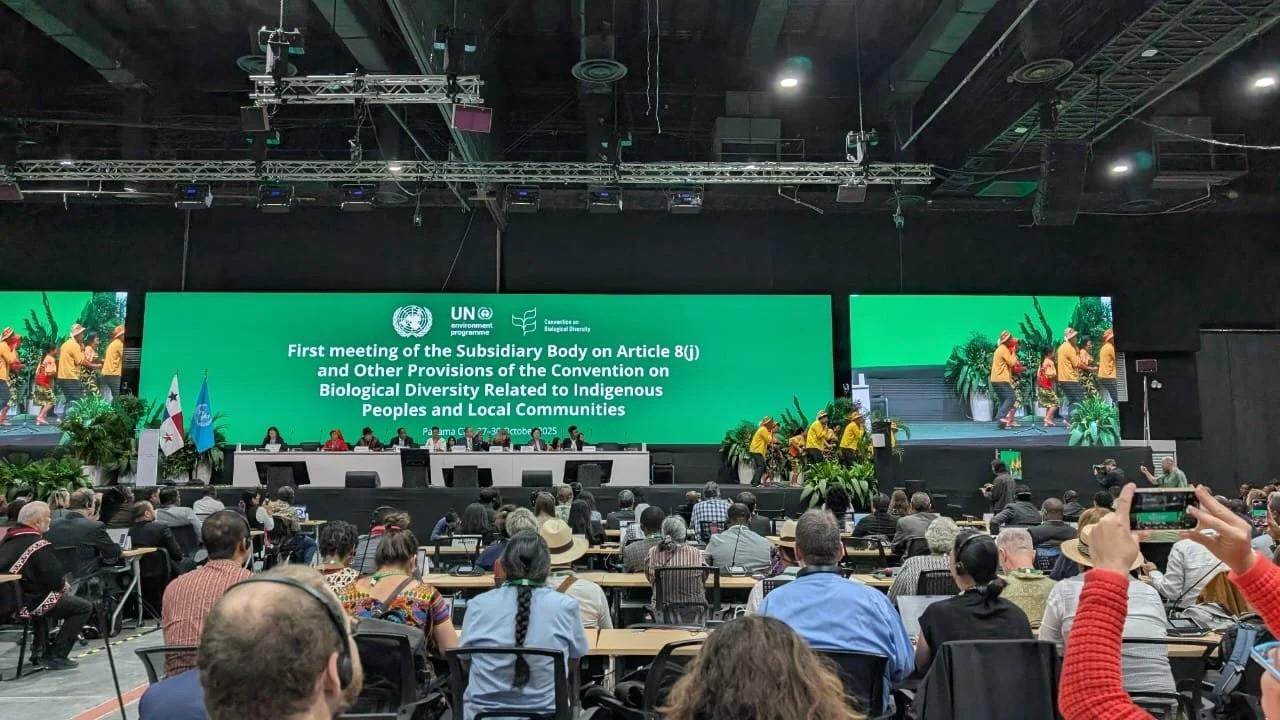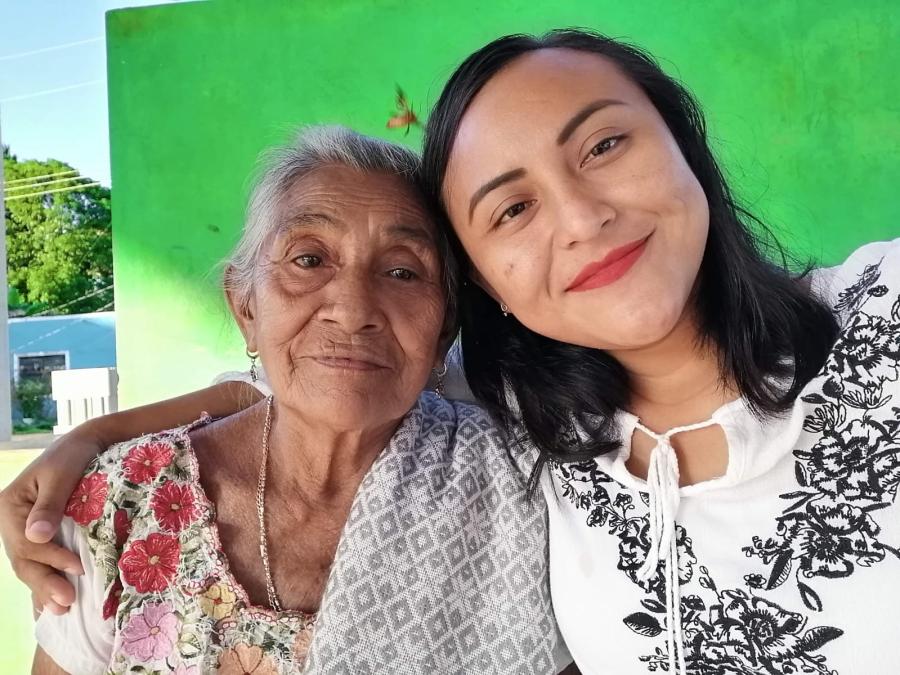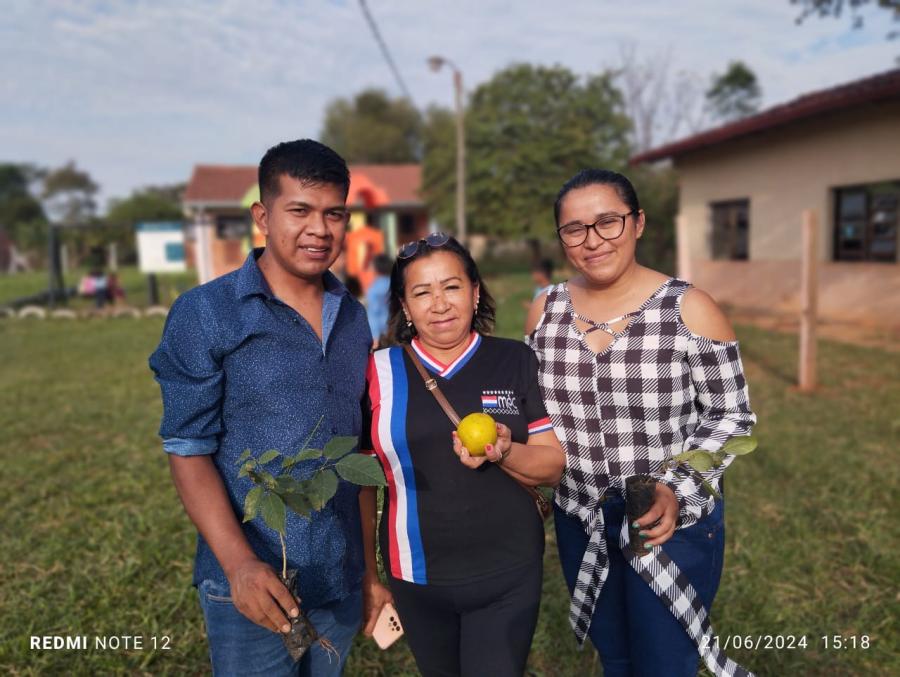
By Bryan Bixcul (Maya-Tz’utujil), SIRGE Coalition Global Coordinator
In Panama City, the global community gathers for a truly historic event: the first meeting of the Subsidiary Body on Article 8(j) of the Convention on Biological Diversity, taking place from October 27 to 30, 2025. For Indigenous Peoples, this meeting is not just another gathering in a long process of international negotiations; it is the outcome of more than a quarter-century of work to secure recognition, respect, and participation in the convention.
How We Got Here
Article 8(j) was written into the Convention in 1992 to ensure that countries would respect, preserve, and maintain Indigenous Knowledge, innovations, and practices relevant to biodiversity, and promote their wider application with the approval and involvement of the knowledge holders.
For many years, this work was carried forward by the Ad Hoc Working Group on Article 8(j), established in 1998 as the first UN body dedicated to Indigenous Knowledge and biodiversity. Over the decades, Indigenous delegates turned that space into one of the most effective and inclusive forums in the UN system.
Discussions on creating a permanent mechanism for Article 8(j) began at the 2016 conference in Cancún. For nearly a decade, Indigenous representatives pressed for a structural reform that would move Indigenous Peoples’ rights and knowledge from the margins of the Convention into its core decision-making architecture. After complex negotiations and lots of Indigenous diplomacy, consensus was finally reached at COP16 in Cali, Colombia: the Subsidiary Body on Article 8(j) was established.
Its creation is a political milestone. It anchors Indigenous issues permanently within the institutional machinery of the Convention, ensuring that Article 8(j) now operates on the same level as the scientific and implementation bodies. This new Subsidiary Body gives Indigenous Peoples a standing space to shape policy, provide technical and legal advice, and influence the direction of global biodiversity governance, rather than having to fight for recognition at every COP.
What the Subsidiary Body Can Do
The new Subsidiary Body is not merely symbolic; it has procedural and political leverage. It provides formal advice to the Conference of the Parties and its subsidiary bodies, and, when requested, to the governing bodies of the Cartagena and Nagoya Protocols, on all matters concerning Indigenous Peoples and local communities. Through this role, it can shape recommendations, draft guidance, and influence the policy direction of the Convention, embedding Indigenous rights and knowledge within the core of global biodiversity governance.
In practice, the Subsidiary Body’s establishment opens a new political space within the Convention where Indigenous Peoples can shape policy before decisions reach the ministerial level. It does not replace the authority of the COP, but it ensures that Indigenous knowledge, governance, and rights are addressed systematically rather than through occasional consultations. Its effectiveness will depend on how firmly Indigenous representatives use this space to influence agenda-setting, drafting processes, and coordination with other subsidiary bodies. In that sense, it marks an institutional shift, from reactive participation to sustained engagement in the formulation of biodiversity norms and guidance.
What Will Be Discussed in Panama
This first meeting’s agenda is ambitious and forward-looking:
Financing and Support for Indigenous Action
The meeting opened with an in-depth dialogue focused on strategies to mobilize financial resources and other means of implementation, including capacity-building, development cooperation, and technical support, for Indigenous Peoples and local communities, with particular attention to women and youth. This session was intended to identify practical ways to strengthen access to funding and implementation support under the Kunming-Montreal Global Biodiversity Framework (KMGBF). While the agenda frames it as a technical discussion, it also carries clear political relevance: how resources flow will determine whether Indigenous-led conservation and restoration can move from commitment to action. At the opening plenary yesterday, Indigenous Peoples raised the longstanding issues of enabling direct financing for Indigenous-led conservation initiatives through their own institutions.
Modus Operandi of the Subsidiary Body on Article 8(j)
On October 27, delegates opened discussions on the modus operandi of the new Subsidiary Body, the rules that will determine how it functions, takes decisions, and coordinates with other CBD bodies. In its opening statement, the International Indigenous Forum on Biodiversity (IIFB), emphasized that adopting the modus operandi is essential to fulfilling the Subsidiary Body’s promise as a platform for dialogue and cooperation under the KMGBF.
Indigenous Peoples emphasized three guiding principles: maintaining the effective practices of the former Working Group on Article 8(j); keeping procedures simple and non-burdensome for Indigenous Peoples and local communities; and ensuring equitable, inclusive, and gender-balanced participation. It called for recognition of Indigenous self-selection processes, linguistic accessibility, and the right to representation, not just participation, in line with Target 22 of the framework.
Indigenous Peoples also proposed that the Subsidiary Body maintain the model of two Co-Chairs, one nominated by Parties and one nominated by Indigenous Peoples and local communities, elected by the COP on a rotational basis among the seven sociocultural regions. It further urged Parties to designate additional focal points from Indigenous Peoples and local communities to strengthen coordination and ensure continuity between meetings.
The outcome of this agenda item will define whether Indigenous Peoples can exercise genuine leadership within the new institutional structure or remain limited to consultative roles. How these rules are finalized will shape the political weight and legitimacy of the Subsidiary Body itself.
Strengthening Legal and Policy Frameworks
This agenda item is the political centerpiece of the meeting. Delegates are examining the proposed guidelines to strengthen legal and policy frameworks for the recognition of Indigenous and Traditional Territories (ITTs) and for the inclusion of traditional lands and resource use in spatial planning and environmental impact assessments.
In its opening statement on this item, Indigenous Peoples reminded Parties that the recognition and protection of Indigenous territories are the first measure required for the full implementation of all twenty-three targets and four objectives of the KMGBF. Indigenous Peoples called for ITTs to be explicitly recognized as areas that guarantee conservation, restoration, and spatial planning outcomes. It urged the development of specific mechanisms for their implementation, reporting, and monitoring, grounded in Indigenous-led systems for tenure, governance, and accountability.
Indigenous Peoples also stressed that the guidelines must provide specific and differentiated treatment for Indigenous Peoples, including Indigenous Peoples in Voluntary Isolation and Initial Contact (PIACI). Consistent with international law, the guidelines should embed the principles of no contact, precaution, and intangibility, ensuring that no activity, economic, conservation, or extractive, threatens their lives or territories. The statement further proposed that the guidelines be governed by the principle of non-regression, guaranteeing that the rights of Indigenous Peoples, as recognized in the United Nations Declaration on the Rights of Indigenous Peoples (UNDRIP), cannot be weakened by new measures adopted under the Convention.
The proposed guidelines are being reviewed through a participatory process initiated with regional consultations and an expert workshop held in July 2025. They are expected to be refined in Panama and submitted to COP 17 for adoption. The draft affirms a human-rights-based approach, respect for customary land tenure, and the right to Free, Prior and Informed Consent (FPIC), but much will depend on how these principles are operationalized in the final text.
For Indigenous Peoples, Item 5 is the opportunity to move beyond recognition toward binding practice. The annex to the draft guidelines contains sections on safeguards, grievance mechanisms, and monitoring that can, and should, be strengthened to address the expanding footprint of extractive and industrial activities, including for mineral extraction. As mining for minerals like lithium, copper, nickel, and rare earths accelerates, Indigenous and traditional territories are increasingly targeted for exploration and extraction, often within key biodiversity areas. These activities expose the contradiction between biodiversity goals and the realities of the current economic model: the planet cannot meet conservation objectives by sacrificing the territories of those who have protected biodiversity for generations.
The Subsidiary Body could support correcting this imbalance. Countries should ensure that the guidelines include explicit safeguards to prevent both conservation and restoration measures, and extractive projects alike, from becoming drivers of dispossession. This means embedding language that:
-
Prohibits any activity in ITTs that threatens biodiversity or the survival of Indigenous Peoples, especially PIACI;
-
Ensures FPIC is implemented as a collective and continuing right, not a procedural step;
-
Establishes community-based monitoring and grievance mechanisms; and
-
Creates a transparent registry and reporting mechanism on Indigenous and Traditional Territories under Target 3, led by Indigenous Peoples and local communities.
Anchoring these safeguards within the guidelines would link biodiversity governance directly to the human-rights framework and ensure coherence across global environmental agendas.
Traditional Knowledge in the Global Review
Delegates are now discussing how traditional knowledge will contribute to the global report on collective progress in implementing the KMGBF. Indigenous Peoples have consistently emphasized that they must not only be consulted but must participate directly in the reporting and evaluation of the Framework’s implementation. Some recommendations include: facilitating submissions from Indigenous Peoples, respecting Free, Prior and Informed Consent, and of local communities, and recognizing community-based monitoring systems, the Local Biodiversity Outlooks, and other Indigenous-generated datasets as official complementary sources of information for the global review. This will need reciprocal capacity-building and financial support to make such participation possible.
These recommendations go to the heart of how progress is defined under the KMGBF. If adopted, they would ensure that the global review reflects realities on the ground, where biodiversity health is inseparable from the security of Indigenous territories, languages, and governance systems. Integrating Indigenous-led indicators and data systems, guided by the CARE Principles of Collective Benefit, Authority to Control, Responsibility, and Ethics, would embed data sovereignty and human-rights accountability in biodiversity monitoring. This shift would move the Convention beyond counting protected hectares toward evaluating whether biodiversity actions are truly equitable, rights-based, and effective.
Recommendations from the UN Permanent Forum on Indigenous Issues
Finally, the Subsidiary Body will consider recent recommendations from the UN Permanent Forum on Indigenous Issues to ensure that biodiversity policy remains aligned with international human-rights standards. This strengthens the bridge between environmental and human-rights institutions.
A New Chapter for Indigenous Peoples' Rights and Conservation
This first meeting is the beginning of a new chapter. It honors the decades of advocacy that led to this moment, from the corridors of past COPs to the community assemblies that guided our negotiators. It recognizes that the survival of biodiversity depends on the survival of Indigenous knowledge, governance, and lands.
As we meet in Panama, we carry the memory of those who fought to make this possible and the responsibility to ensure that this new body delivers real change.
For Indigenous Peoples, Article 8(j) is a living promise that the world will finally listen, learn, and act with us, not for us.
Top photo: First meeting of SB8J in Panama. Image courtesy of Bryan Bixcul.



